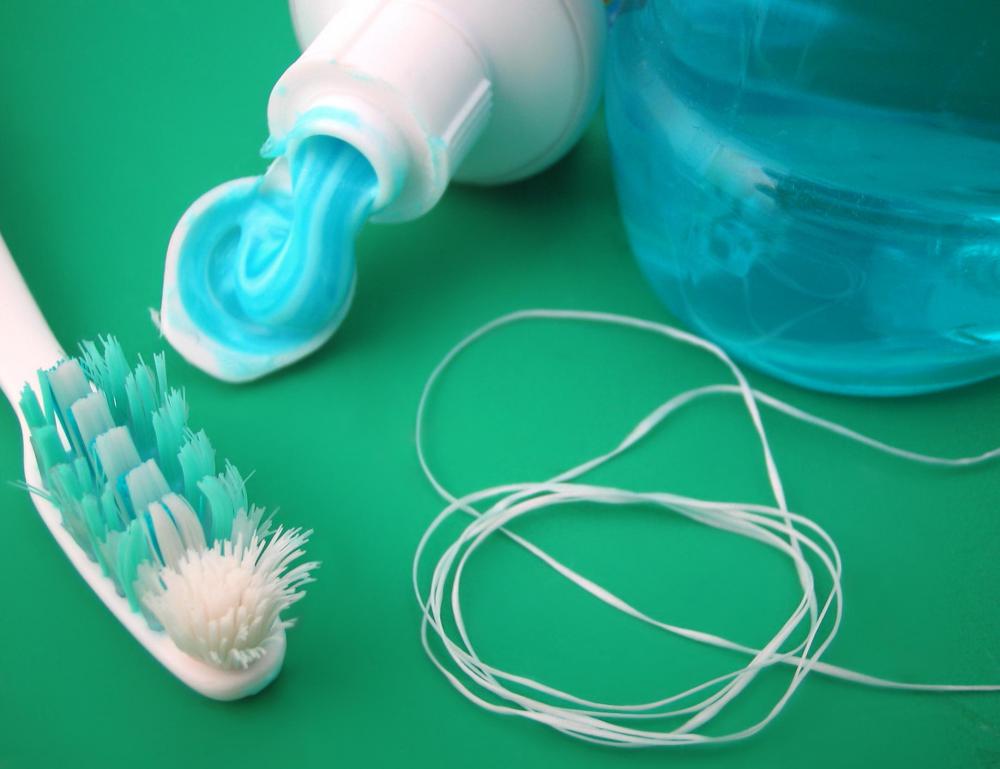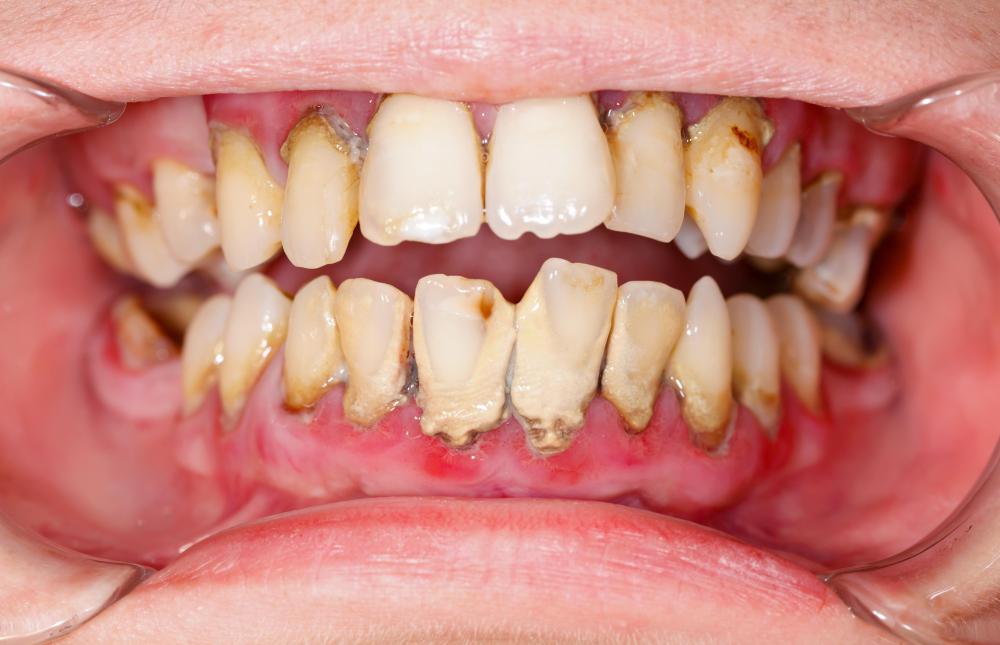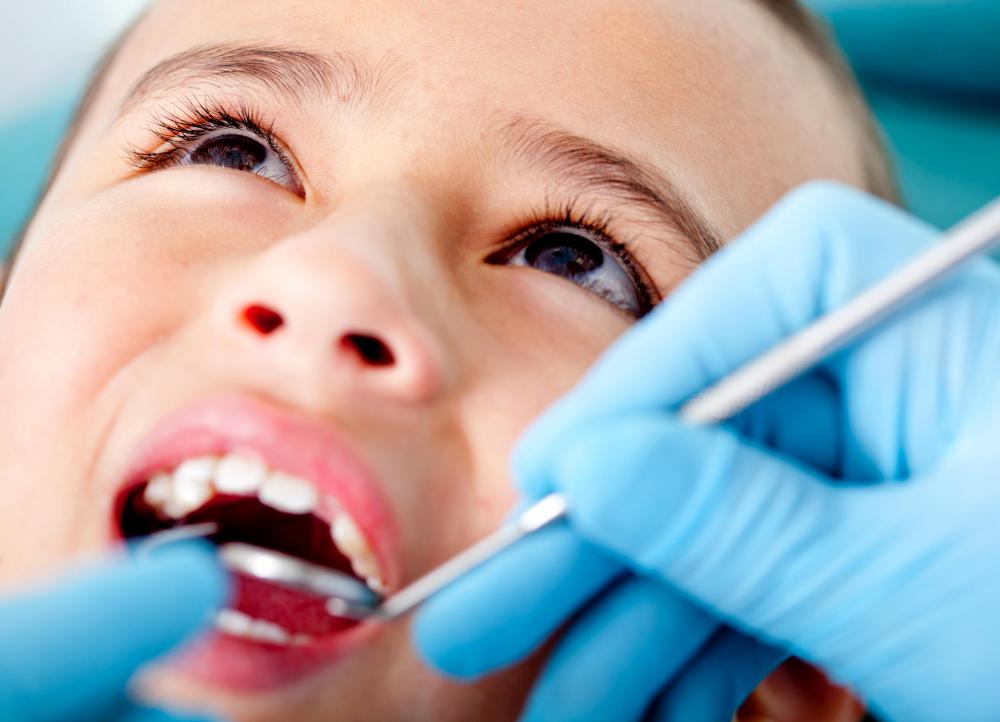At TheHealthBoard, we're committed to delivering accurate, trustworthy information. Our expert-authored content is rigorously fact-checked and sourced from credible authorities. Discover how we uphold the highest standards in providing you with reliable knowledge.
What Is Dental Debridement?
Dental debridement is a more extensive teeth cleaning regimen that is meant to remove excessive tartar and plaque build-up. This procedure, carried out by a dentist or dental hygienist, is usually necessary when people have been extremely negligent in their home dental care and have not had regular dental cleanings. When dental care has been extremely lax, debridement may also be necessary in order for a dentist to make a complete evaluation of tooth decay and the health of the teeth. Taking about one to two hours, this procedure uses a scaler and an ultrasonic water tool to erode away the tartar and plaque. Many people undergoing this dental procedure will receive local anesthetic or sedation.
The first step in dental debridement is to remove as much of the plaque and tartar as possible using a scraping tool, called a scaler. Following the scaling, the teeth are then further cleaned using a high-powered water and ultrasonic tool which flushes away the loosened superficial grime. Sometimes, the teeth will be scaled again if the water tool leaves behind visible plaque. The procedure can take from one to two hours depending on how delinquent the tooth care has been.

Following the dental debridement, the patient is provided with detailed instructions on how to establish good home care and is usually asked to return to the office in one week for a complete dental evaluation. Once the teeth and gums have recovered from the debridement, the true health of the teeth and tissue can be evaluated. Some patients will need periodontal treatments, further scaling or even a root planning to fully restore the health of the teeth.

During this dental procedure, the tartar and plaque will need to be completely removed from the gum line. This can cause irritation, mild lingering pain and could lead to an infection along the gum. The dentist should be contacted if the patient observes any signs of infection including, swelling, excessive pain in the gums or a fever. The teeth may also have a temporary sensitivity to hot and cold following the dental debridement procedure. This sensitivity can be alleviated by using desensitizing toothpaste.

Sedation is often recommended, for several reasons, for people undergoing dental debridement. One of the main reasons patients neglect their teeth is due to a fear of the dentist. Sedation can help alleviate this anxiety. This procedure is also often uncomfortable and tedious. Dental sedation or local anesthetic can make this procedure easier on the patient and ensure the procedure can be thoroughly completed.
AS FEATURED ON:
AS FEATURED ON:

















Discussion Comments
@Markerrag -- Still, it is a great idea to ask your dentist how to deal with tartar and plaque between cleanings. Dental care products at home are no substitute for visiting the dentist, but they can keep problems at bay between cleanings.
Anyone who hates going to the dentist should read this article with care. The debridement procedure is long and painful and it is not just reserved for people who don't brush their teeth regularly. No, if you have a lot of plaque and tartar buildup because you have neglected regular dental cleanings, you may be in for this procedure.
And it is not comfortable, folks.
Going to the dentist for regular cleanings may not be completely enjoyable, but it sure as heck beats sitting through a painful debridement.
Post your comments